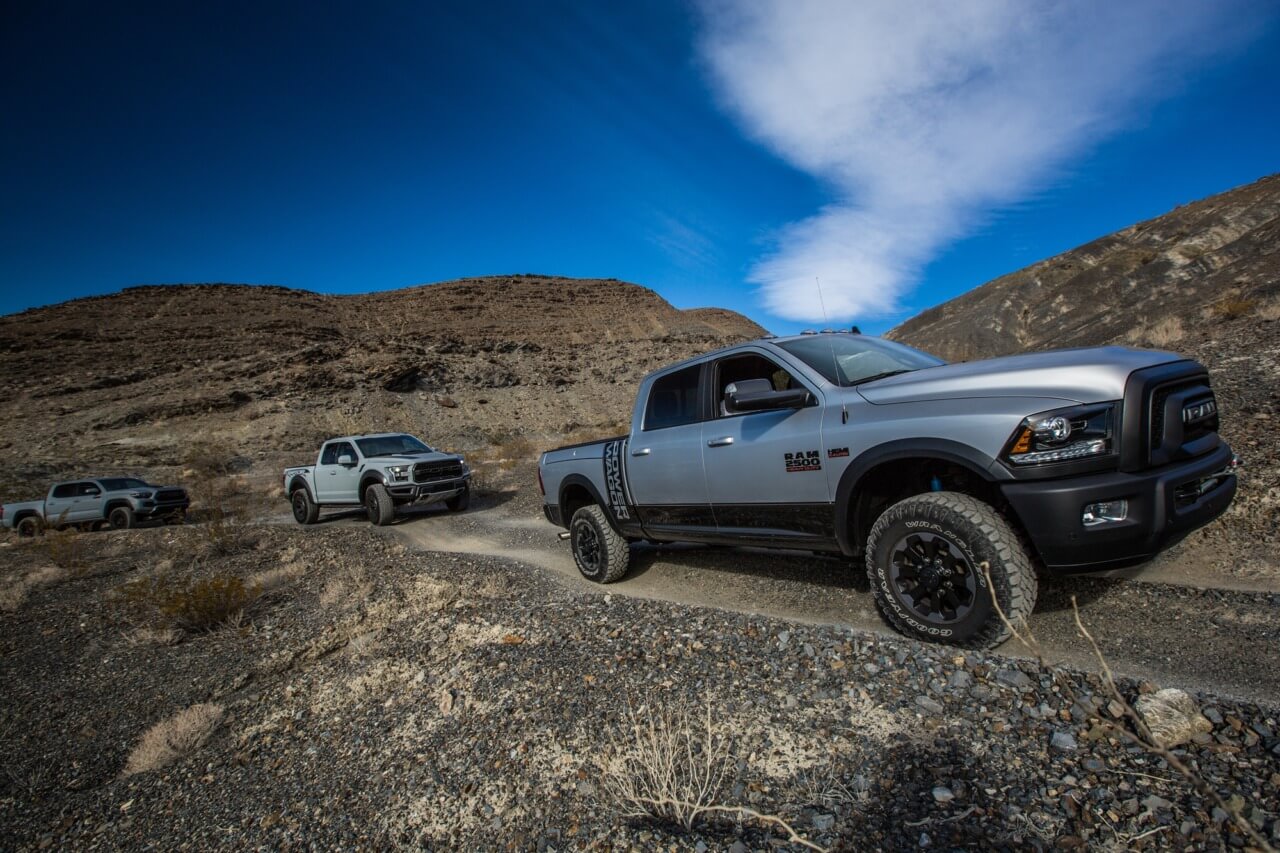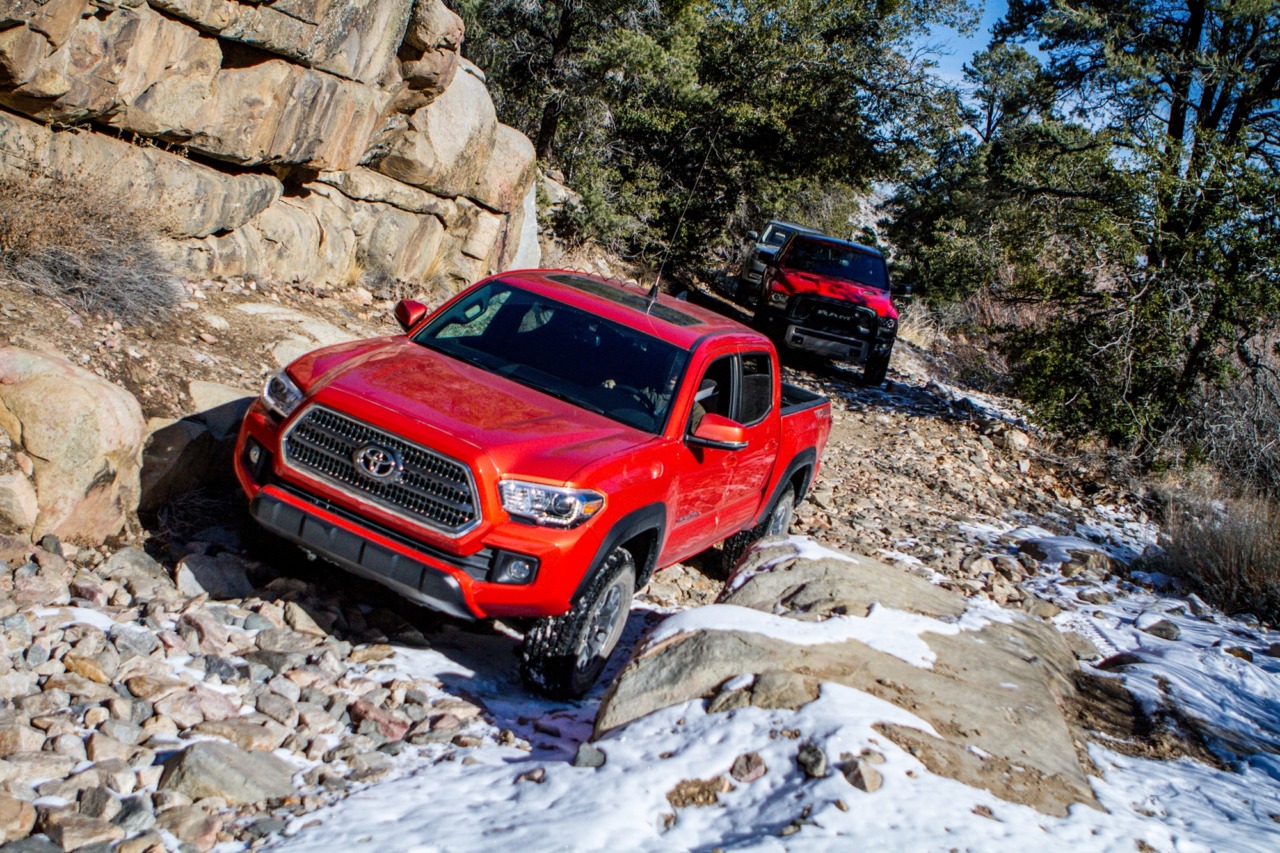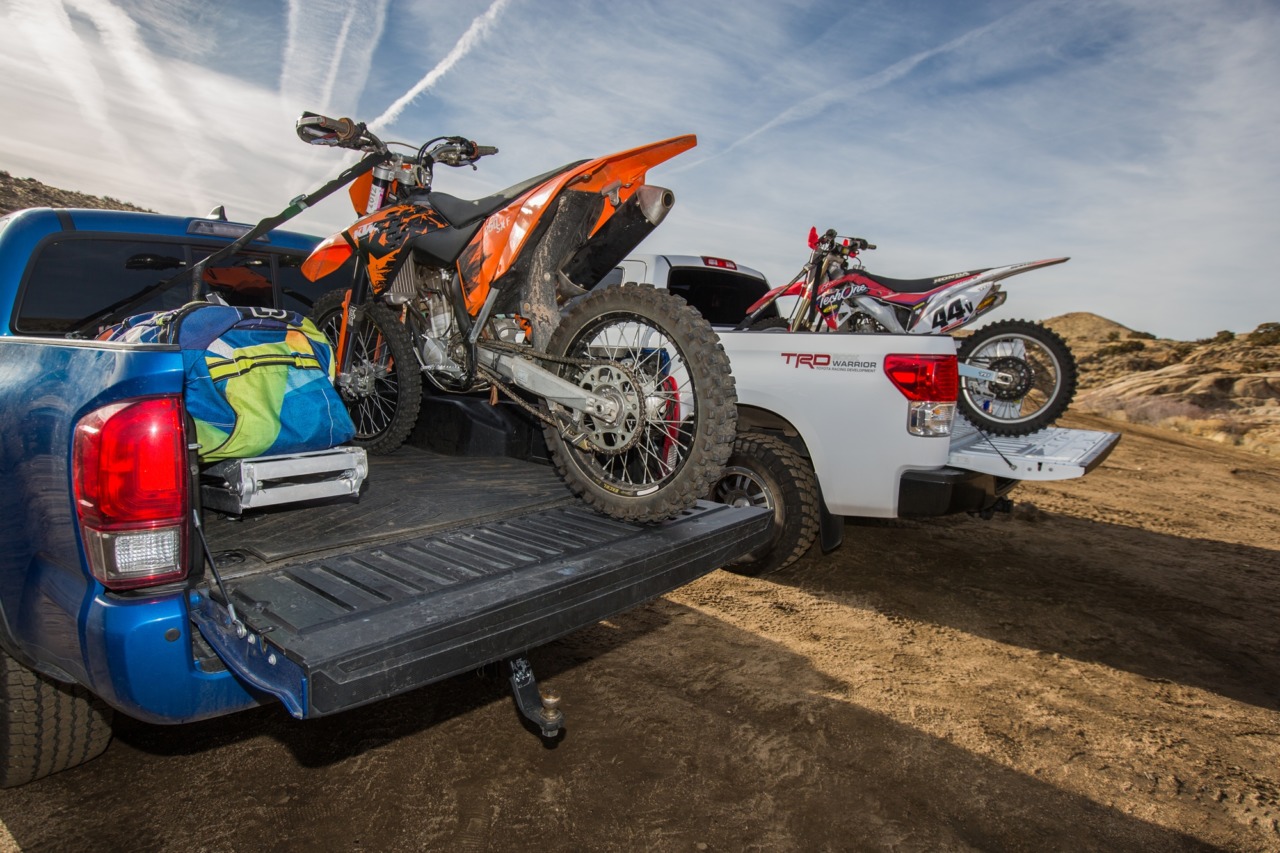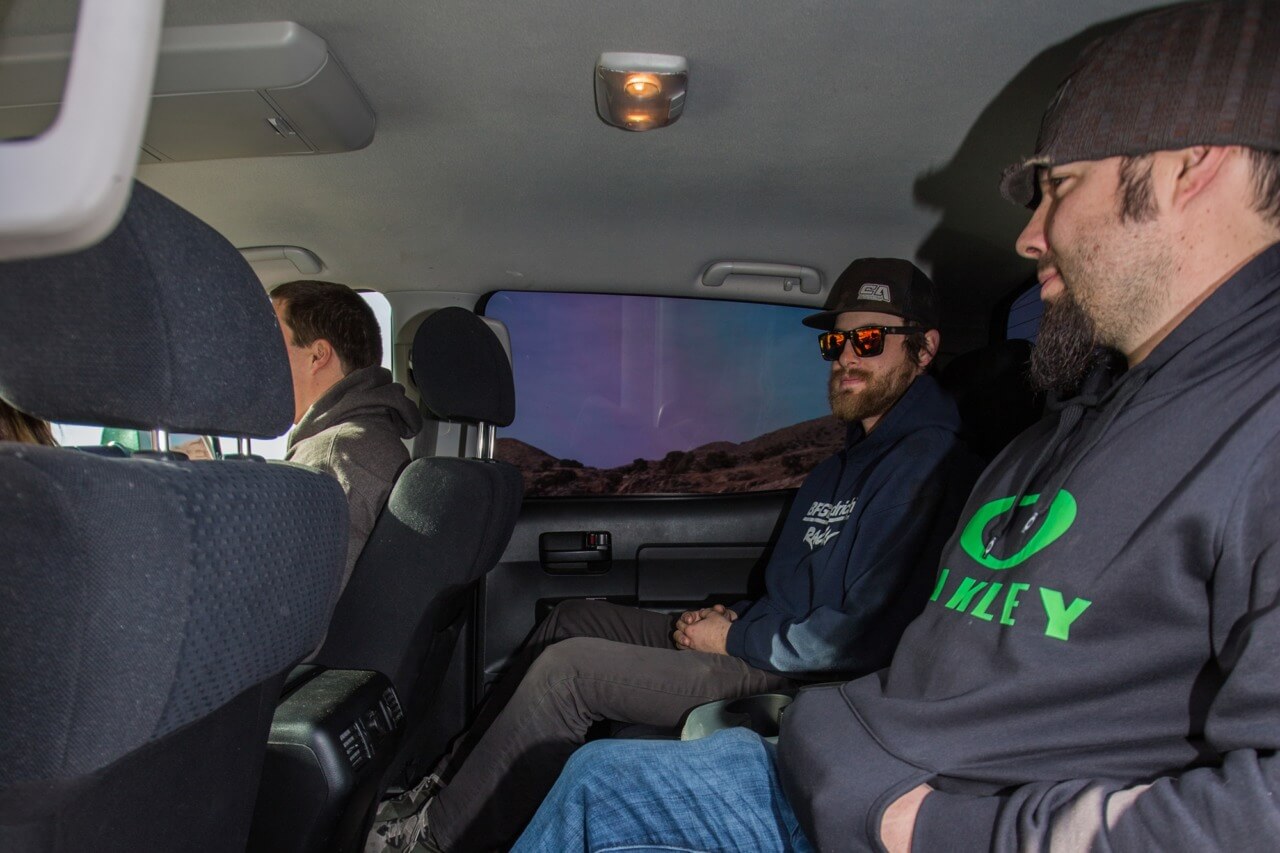
Photography by Harry Wagner
Decades ago, there was a clear distinction between fullsize trucks and “mini trucks”. Fullsize trucks were built by the Big Three (Ford, GM, and Dodge) and came with V8 engines. Foreign manufacturers like Toyota and Nissan built mini trucks with fuel efficient four-cylinder engines. They were physically smaller and cost less than their fullsize counterparts. Over the years though, the lines have become blurred. Toyota and Nissan build fullsize trucks now with V8 engines and enough room for the entire family. Meanwhile, GM builds the Colorado and Canyon and Ford has reintroduced the Ranger, but neither the Colorado, Ranger, Tacoma, or Frontier can truly be called a “mini truck” anymore. They have grown in size, features, and cost, making it more of a challenge to determine the right truck for your needs. And the addition of the Jeep Gladiator to the market has made the decision on which truck to buy an even more complicated one.
Power

Power Wagons are large, 3/4-ton trucks but the are arguably the most capable pickups on the market with front and rear lockers, a disconnecting sway bar, and even a Warn winch directly from the factory. These Rams don’t get great fuel mileage though, and their size is often the limiting factor on tight trails. If you want the most capability right off the dealer lot though the Power Wagon should definitely be a consideration.
If your truck doubles as your hotrod, you will likely want a half-ton. No manufacturer currently offers a V8 in a midsize truck. The 3.6L V6 offered in the Chevy Colorado and GMC Canyon is the most powerful in its class, making 308 horsepower and 275 lb-ft of torque. The 6.2L offered by GM in their half-ton trucks produces 420 horsepower and 460 ft-lbs of torque, but that is actually 30 horsepower and 50 ft-lbs less than the twin turbo V6 engine offered in the Raptor. Forced induction and automatic transmissions with more gears than your bicycle are now the norm. If you prefer shifting your own gears though, you will have to get midsize truck. GM, Jeep, Toyota, and Nissan all offer manual transmissions in their smaller trucks, but no half-ton truck on the market is currently available with a stick.
Fuel Economy

Other than Jeeps, Tacomas are the most common vehicle we see on the trail, and there is a lot of aftermarket support for them. Depending on how much off-roading you plan to do in your truck, things like bumpers, skidplates, and locking differentials are all factors in choosing which vehicle is the best for your specific needs.
Ford had previously killed the Ranger, citing that the fuel economy and price difference between the Ranger and F-150 was too insignificant to justify the downsized truck. Some research into the difference in cost and efficiency between half-ton and mid-size trucks bears out this claim across all brands. Nearly all pickup trucks have combined fuel mileage (mixed city and freeway driving) in the high teens. The Tundra is the worst of the bunch, offering only 14 mpg from the 5.7L iForce engine and six-speed automatic. Range is also important though when traveling in remote locations, and you might be surprised to learn that the 38-gallon fuel tank in the Tundra provides it with a greater range than a Tacoma.
The Ranger is at the front of the pack for mileage, delivering 22 mpg from the turbocharged 2.3-liter four-cylinder engine and ten-speed automatic transmission. The influx of small diesel engines offered in the Colorado and Canyon, Silverado and Sierra 1500, Ram 1500, and F-150 have also increased the fuel economy and range but come at an added cost. Typical markup for a diesel is around $3,500, which will take tens of thousands of miles to pay off with the added fuel economy and cost difference between diesel and gasoline.
Cost

The most popular configuration for both fullsize and midsize trucks is four doors with short beds. You aren’t going to close the tailgate of a truck with a 5.5-foot bed with a dirt bike or sheets of plywood in it. Longbed alternatives are available, but at the expense of cab space or maneuverability from a longer wheelbase.
Base prices between midsize and fullsize half-ton trucks are relatively small, although not insignificant. Most midsize trucks start around $25,000 for a no-frills 2WD model, with the Frontier coming in the least expensive at only $19,000 for a starting price. In comparison most fullsize trucks start around $30,000. Options such as diesel engines and off-road packages make up the bulk of the difference in price between models though and can easily double that price. The range in price for a new F-150 varies from $28,000 to $70,000!
Towing and Payload

If sand is your terrain of choice, a fullsize truck with a powerful V8 (or forced induction) engine is probably the best choice for you. The Ram in particular benefits not only from a Hemi engine and eight speed automatic transmission but also a multi-link coil sprung rear suspension. The Rebel trim shown here even comes with a locking rear differential and 33-inch Goodyear Wrangler Duratrac tires.
If you are looking to tow a camp trailer or pull a UTV or rockcrawler behind your truck, it is tough to beat a fullsize truck. The same goes for slide-in campers and other heavy loads in the bed. You can get away with a midsize truck for lighter loads; the payload on a Tacoma is 1,540 pounds (listed for the lightest truck in 2WD trim with a four-cylinder engine and manual transmission) and the maximum towing capacity is 6,800 pounds. The Colorado has a towing capacity of 7,700 pounds, 900 more than the Tacoma. Still, it is dwarfed by the fullsize trucks. The F-150 has a maximum towing capacity of 13,200 pounds and a payload capacity of 3,270 pounds when configured as an XLT Regular Cab 4×2 with the 5.0L V8 engine. In addition to coming with the necessary receiver hitch and wiring, fullsize trucks have more power, larger brakes, and weigh more than midsize trucks. 3/4-ton and one-ton trucks offer even more capacity and may be an even better choice for a dedicated tow vehicle, but the stiff suspensions required to handle those heavy loads make them less desirable for trail use.
On The Road
Jeep has shaken up the midsize truck market with the introduction of the Gladiator. No other midsize truck on the market has solid axles and a removable top. And the Rubicon trim, like with the JL Wrangler, adds locking differentials, a disconnecting front sway bar, a 4:1 Rocktrac transfer case, and more. Plus many of the Wrangler accessories such as front bumpers fit the Gladiator, making it easy to customize.
The size difference between midsize and fullsize trucks is obvious when they are parked next to each other. If parking garages, parallel parking, and congested city driving are part of your normal routine, you will likely be happier with a smaller, nimbler midsize truck. All are offered in four door, crew cab versions these days, although seating space for rear passengers varies greatly. If you have young children or have pets, a midsize truck will likely be fine. If you have grown children or often travel with four adults, the room available in a fullsize truck will be appreciated. Consider that a Double Cab Tacoma offers 32.6 inches of rear leg room, but a Tundra Crew Max has 42.3 inches of leg room, enough for even the tallest occupants to sit comfortably on long drives.
On The Trail

Rear passenger leg room between a midsize truck and something like a Tundra Crew Max isn’t even close. The smaller Tundra Double Cab would be a closer comparison with the Double Cab Tacoma, it has 8 inches less legroom than the Crew Max but the bed is a foot longer. On average a fullsize truck with four doors has eight more inches of legroom than a midsize truck with four doors.
You can get an off-road package in nearly any truck on the market, with the Ford Raptor being the most capable half-ton and the Jeep Gladiator Rubicon offering the most features in a midsize truck. The two start at $53,205 and $43,875 respectively, and both come with front and rear locking differentials and other off-road specific features. Depending on your budget and planned use may make more sense to purchase a less expensive truck and add the suspension, gearing, and locking differentials you want in the future.
Features aside, a smaller, lighter midsize truck will be able to go more places than a larger, heavier fullsize truck. And that added room from a crew cab pickup that is so useful on the road works against you on the trail, decreasing in the breakover angle. This can be cured somewhat with a lift kit and larger tires, but an Access Cab truck with a 126-inch wheelbase will be easier to drive through most trails than a Double Cab truck with a 140-inch wheelbase. Midsize trucks are also narrower than their fullsize brethren, and often have shorter hoods that offer improved visibility. There is no right or wrong answer when it comes to the “best” truck – it all comes down into what you intend to use it for.



2